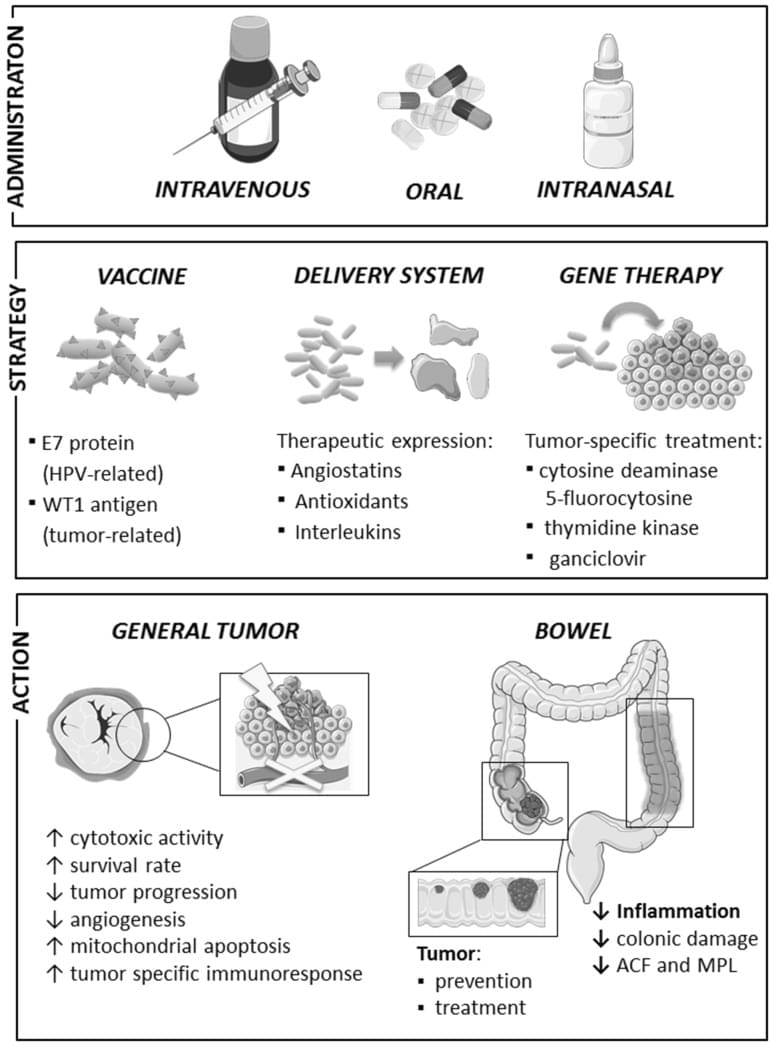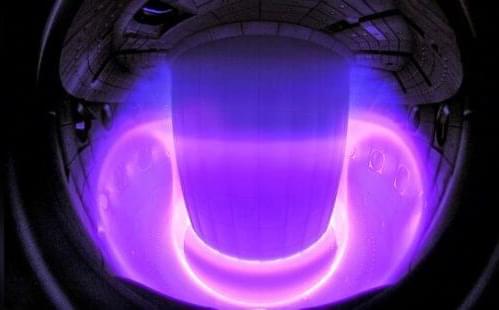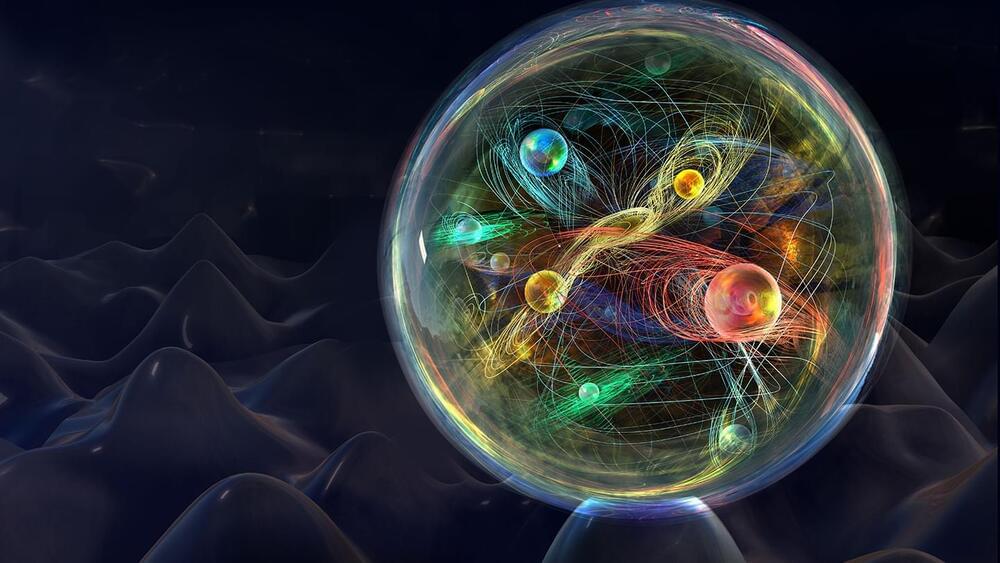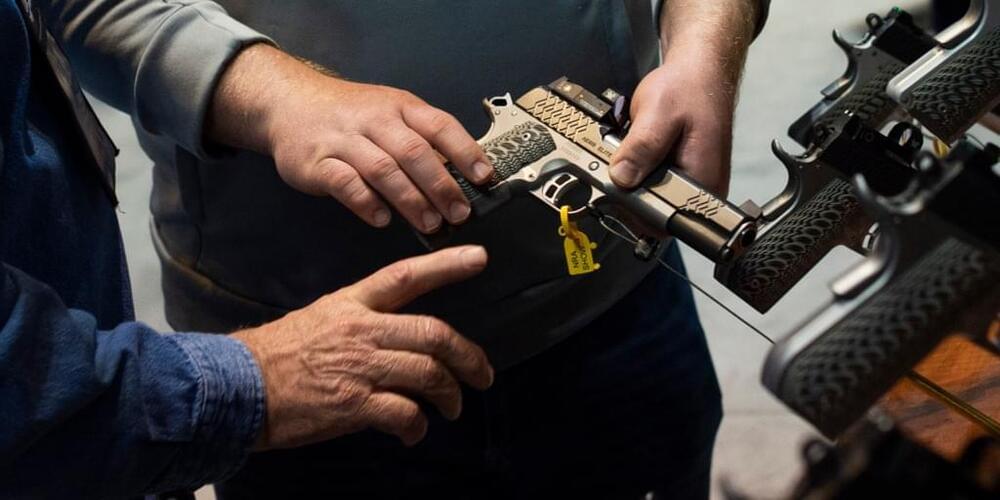Circa 2021
Microbes are really good at eating a range of substances, so humans are putting them to work cleaning up our messes — and our art.




Probiotics show a new to battle cancer and other diseases keeping the host body healthy with its anti inflammation abilities.
Gut microbiota is widely considered to be one of the most important components to maintain balanced homeostasis. Looking forward, probiotic bacteria have been shown to play a significant role in immunomodulation and display antitumour properties. Bacterial strains could be responsible for detection and degradation of potential carcinogens and production of short-chain fatty acids, which affect cell death and proliferation and are known as signaling molecules in the immune system. Lactic acid bacteria present in the gut has been shown to have a role in regression of carcinogenesis due to their influence on immunomodulation, which can stand as a proof of interaction between bacterial metabolites and immune and epithelial cells. Probiotic bacteria have the ability to both increase and decrease the production of anti-inflammatory cytokines which play an important role in prevention of carcinogenesis. They are also capable of activating phagocytes in order to eliminate early-stage cancer cells. Application of heat-killed probiotic bacteria coupled with radiation had a positive influence on enhancing immunological recognition of cancer cells. In the absence of active microbiota, murine immunity to carcinogens has been decreased. There are numerous cohort studies showing the correlation between ingestion of dairy products and the risk of colon and colorectal cancer. An idea of using probiotic bacteria as vectors to administer drugs has emerged lately as several papers presenting successful results have been revealed. Within the next few years, probiotic bacteria as well as gut microbiota are likely to become an important component in cancer prevention and treatment.
Cancer is considered as one of the most significant causes of death. The treatment of tumors has received much attention in the last years; however, the number of people suffering neoplastic syndrome is still increasing. Thus, researchers are trying to face this process searching for innovative therapies and prophylaxis. Despite the fact that cancer risk indisputably depends on genetic factors, immunological condition of the organism plays a considerable role in it, that being closely associated with probiotic bacteria and commensal bacterial flora presented mainly in the digestive tract. Probiotic strains, inter alia Bifidobacterium, or Lactobacillus, widely present in commonly consumed fermented milk products, are known to have various beneficial effects on health. To date, there is a plethora of studies investigating the correlation between intestinal microbiota and carcinogenesis which have been evaluated in this article.




“The analogy I often use is an electric bike,” he added. “When someone’s pedaling but having difficulty, the bike senses it and augments it. We’ve made the equivalent of that for human mental function.”
Participants in the trial reported that their anxiety got better once the system jumped into action, mostly due to the fact that they had more cognitive control and were able to shift their focus better.
“This could be a totally new approach in treating mental illness,” Widge said. “Instead of trying to suppress symptoms, we could give patients a tool that lets them take control of their own minds.”

Back when the Cadillac CT6 was the new hotness for the brand still trying to stand up to its full height, rumors abounded of a new model well above that to challenge the rarified trims among German luxury competition. The most oft-repeated portion of that rumor was that the model would cost well more than $100,000. When Cadillac’s electric turn gathered momentum, we began hearing about a sedan called the Celestiq that would be the pride of the fleet. It doubled the potential starting price of the previous flagship, as recently as this month being touted as costing more than $200,000. A report in the Wall Street Journal suggests that is correct. Citing “people familiar with the matter,” the paper said, “the Celestiq price tag could run well beyond $300,000 depending on added features.”
A straight reading suggests an MSRP somewhere above $200,000 and an options menu with enough pricey choices to cross the $300K tier. In itself, that’s not outrageous. The 2023 BMW i7 can be optioned from a starting price of $120,000 to $155,000. The Porsche Taycan Turbo S can be optioned from $188,000 to $237,000 by checking a few boxes in just five of the potential 31 menu categories. The jumps go logarithmic when one steps up to superluxe models from makers like Aston Martin and Bentley and Rolls-Royce. So throwing $50,000 in options at a car that starts at $275,000 isn’t much of a story.
The story is that we’re talking about Cadillac, and these kinds of numbers would represent huge changes for the brand’s pricing and options. The 2023 Escalade-V doesn’t have a configurator yet, so starting with the $112,500 Escalade ESV Sport Platinum 4WD in four-wheel drive, clicking every mechanical and luxury accessory got us to almost $135,000, representing $23,500 in options. If the WSJ is even close in its assessment, the Celestiq could start around $100,000 more than the $150,000 Escalade-V and then unveil the kind of options menu that’s usually read in a British accent by someone wearing $3,000 shoes.

The breach occurred as part of the state Department of Justice’s launch of its “2022 Firearms Dashboard Portal,” officials said.
The names, addresses and license types of all concealed carry permit holders in California were exposed after the state Department of Justice suffered a data breach, authorities said Tuesday.
The Fresno County Sheriff’s Office on Tuesday learned of the breach from the California State Sherriff’s Association, according to a statement.
The breach occurred as part of the state DOJ’s launch of its “2022 Firearms Dashboard Portal,” the sheriff’s office said in the statement.